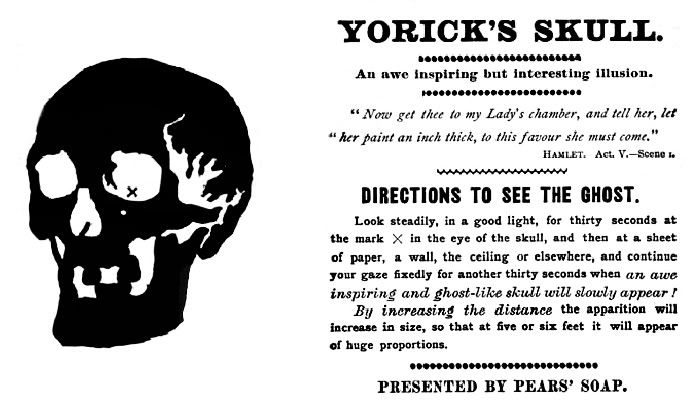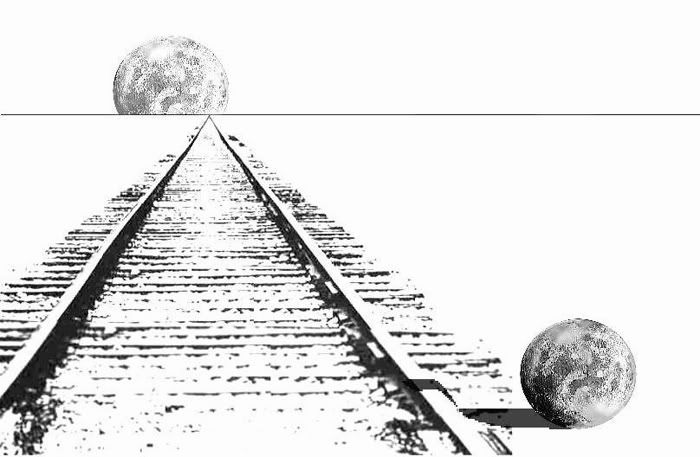Anyone who has ever been on an investigation with me has heard me talk about the problems paranormal investigators face when dealing with our vision in the total darkness. After the lights go out and the investigation begins, we may perceive lights that flicker or disappear, faint glows that slowly fade in and out, lights that dance around in front of us, or appear to move in so close we feel we could touch them, but when we reach out, nothing is there. If unaware of the problems our eyes confront when trying to process information in an unlit environment, we may assume that we are experiencing something paranormal, when in fact, the perceived phenomenon may be due to the way our eyes function naturally in the darkness.
My name is Tim Doyon, and I am a Paranormal Investigator. I maintain a certification in Parapsychology and am the founder of a Paranormal Research team called FindersCreepers, (http://www.finderscreepers.org/). I have experienced enough throughout the years to feel totally comfortable in saying that I sincerely believe in life after death, and in no way am I suggesting that what we see in the darkness is not paranormal. I am simply proposing that everyone who does work at night, (e.g. Pilots, Astronauts, the Military, Paranormal Investigators, etc.) needs to be aware of their own physical limitations so that we can be wholly prepared for what may come our way. I am not a Doctor or Scientist, so please take what I say in that light. I am speaking from my own experience, previous military training and personal studies. That being said, let me begin:
Lights that Flicker or Completely Disappear
This can be caused by the natural physical anatomy of our eyes which leads to a condition called Averted Vision. The human retina contains two types of light-detecting cells: cones and rods. The cones support daylight and color vision, whereas the rods are used for low-light conditions. In the human eye there are roughly 5-7 million cones and 100-130 million rods. The cones inhabit a small spot centrally located on the retina called the fovea, whereas the rods surround the cones and cover a much greater area called the macula. Because of this natural condition, it is nearly impossible for us to pick up small faint lights in the darkness while looking directly at them. As Paranormal Investigators, we are in very dark places routinely during our investigations. If you see a light in your peripheral vision that disappears when you look directly at it, try not to jump to conclusions. Attempt to look at it again, but this time, don't stare at it; instead, look 15 to 20 degrees to the side of the object. If it reappears, look directly at it again; if once again it vanishes, then it is more then likely that you are experiencing averted vision.
Faint Glowing Shapes that Slowly Fade Away
If you have ever had a faint glow appear before your eyes, only to fade out a short time later, you may have actually witnessed the apparition of a ghost as it was trying to manifest itself in front of you. Another possibility is that you were experiencing what we call an After-Image. An after-image is an image that is retained by the brain even after looking away from the object. Let me give you an example by showing you a very popular optical illusion. It is called the Yorick's Skull Illusion and it is based solely on the eye's natural tendency to produce an after-image. If you've never seen this illusion before, give it a shot; I'm sure you'll be amazed!

You'll notice that the color of the after-image is the complement of the color of the object being viewed. Therefore, white will appear as black, black as white, etc.
So how does after-imaging effect the Paranormal Investigator? Well, if you are in the dark and somebody illuminates their flashlight, and that light focuses on a wall or another object, and you look at it, even for just a moment; it is possible that you will see the after-image of that light appear before your eyes a short time later. So, how do you know if it is an after-image you are experiencing, and not the real thing? Try looking at a different area of the room and blink. If it shows up again, always in front of your face, then you are more then likely seeing an after-image, and not something supernatural. If that's the case, just close your eyes tight and give them a moment to relax. You might try pressing the palms of your hands tightly against them for a moment. In no time at all, the image will fade and you can get back to the task at hand.
Lights that Appear Much Closer Then They Really Are
The problem with processing information in the dark is that we have no visual clues to compare against the object we are seeing. In other words, when we look at an object, the human eye relies on surrounding objects to determine it's size. I'll give you another optical illusion to use as an example.
In the following illustration, you can see some railroad tracks extending towards the horizon. There are also two moons in the image; a huge one on the horizon and a tiny one closer to you - well, that's the illusion anyways. Actually, the two moons are the exact same size. It is the visual references provided by the railroad tracks that help our brain to determine, (accurately or not) the true size of the moons.

The effect is so strong that even when we know they are the same size, it is still difficult to see them as such.
When the Paranormal Investigator is sitting in the dark and see's an orb or other type of faint light in the area, he or she will begin to try to make sense of the object. If unable to view any other visual references to compare the object to, he/she may become convinced that the object is larger or smaller then it actually is. With that information, the investigator may also confuse the actual distance of the object. The larger the room we are in, the more extreme the phenomenon may be. Even the faint light of a cigarette at the end of a tunnel may appear to the investigator as a small red light levitating directly in front of our faces.
Dancing Lights
Have you ever been sitting in a room so dark you couldn't see your hand in front of your face, and the led from your K-II meter suddenly begins to dance around in front of you? If so, you may have fallen victim to what is referred to as the Autokinetic Effect. The autokinetic effect is the illusion of perceived movement exhibited by a still dim light when it is stared at in the dark. Although the exact cause of the illusion is not known, it is believed to be the result of small movements of the eyeball itself along with the loss of the adjacent references which normally stabilize the visual perception. The autokinetic effect can be reduced by maintaining good visual scanning techniques rather than staring at the light source, or by increasing the intensity of the lights, if at all possible.
The Point of All This
There are many more types of phenomena that we as Paranormal Investigators may experience as our brains try to decipher the information presented to it at night. With few or no visual clues to go by, it is very hard to distinguish the size, distance, movement, etc. of many of the things that appear before us. So, what can we do to help stop, or at least reduce these problems before they take place?
Dark Adaptation
First, we should do everything we possibly can to keep our eyes adjusted to the dark. Within 15-20 minutes of being exposed to total darkness, chemical changes begin to take place in the retina of our eyes that increase our ability to see faint objects. Once adjusted, we are able to regain some of the visual references our brain needs to properly process some of the other things that may come into our view.
This adaptation can be negated immediately by any sudden exposure of light, whether it be from a camera flash, flashlights, etc., so it is very important that we consider using lights only when absolutely necessary, and even then, we should use dim lights as apposed to bright ones. Although it is a subject of controversy, we should also consider the use of only red-filtered flashlights and other lighting during our investigations to help maintain our vision in the dark.
While on-board a ship in the U.S. Navy, we had many traditions that were followed without exception. One was Taps. At dusk every night, it came across the loudspeakers, "taps, taps, lights out, all hands turn into your bunks, maintain silence about the decks, now taps..." At that time, all the ships lights were extinguished and only red-filtered lights illuminated the interior of the ship. This was in an effort to help us all find our way around the ship while still maintaining our night vision. If it works for the Navy, then I have every reason to believe that it would work for us too.
A few ideas that we might all be able to use:
Consider only very dim illumination of the site during investigations to maintain visual acuity in the dark,
Consider using only dimly lit red filtered flashlights throughout investigations,
Have all members adapt themselves to the darkness for at least 15-20 minutes prior to the beginning of any investigation,
Avoid bright lights if at all possible, if a photo is being taken, be sure to advice all team members so they have time to close their eyes tightly beforehand,
Utilize night vision cameras with good IR lighting whenever possible/practical,
Try not to stare directly at objects, but rather you should scan and/or look 15-20 degrees to the side of any visual targets,
Regularly wear good-quality sunglasses on sunny days, especially on days of night investigations,
Eat an adequate diet that includes vitamin A,
Avoid Smoking – Cigarette smoking has been shown to diminish oxygen levels in the blood and therefore has a negative effect on ones ability to see in the dark,
During the drive to the investigation site, keep your instrument panel lights as dim as possible while still maintaining your ability to drive safely,
If you are exposed to a bright light after you have adjusted for the darkness, place both hands over your tightly closed eyes and press firmly for a moment. This may help you readjust to the darkness a little quicker then normal.
Conclusion
The most important reason I wanted to write this article was to help, not only my own team, but other paranormal investigators as well to understand the visual impairments we are dealing with as we try to conduct our research in the dark. With understanding, we are better able to debunk that which can be debunked and therefore give credibility to that which cannot.
The information and suggestions I provided are not a conclusive list, but I hope it helps... even if just a little.
Take care my friends and happy hunting!
Tim Doyon, Founder of FindersCreepers
http://www.finderscreepers.org/